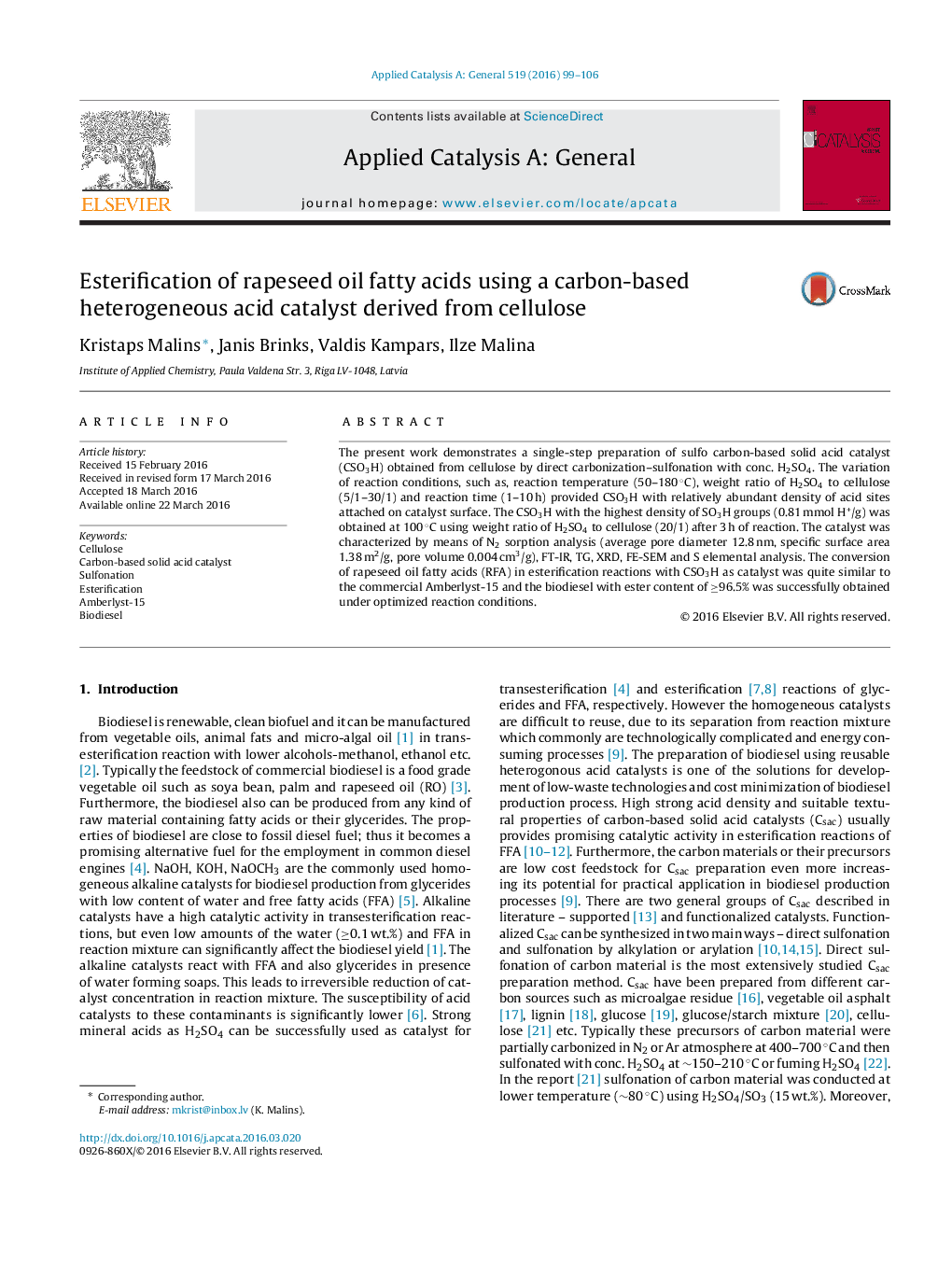| Article ID | Journal | Published Year | Pages | File Type |
|---|---|---|---|---|
| 38902 | Applied Catalysis A: General | 2016 | 8 Pages |
•The conversion of cellulose into catalyst in presence of conc. H2SO4 reached ∼61%.•High amounts of COOH, OH and SO3H sites have attached on obtained catalyst surface.•Acidic sites increase hydrophilicity of catalyst surface and its catalytic performance.•The conversion of rapeseed oil fatty acids over obtained catalyst reached 96.7%.•The catalyst initial activity can be partially recovered by simple regeneration method.
The present work demonstrates a single-step preparation of sulfo carbon-based solid acid catalyst (CSO3H) obtained from cellulose by direct carbonization–sulfonation with conc. H2SO4. The variation of reaction conditions, such as, reaction temperature (50–180 °C), weight ratio of H2SO4 to cellulose (5/1–30/1) and reaction time (1–10 h) provided CSO3H with relatively abundant density of acid sites attached on catalyst surface. The CSO3H with the highest density of SO3H groups (0.81 mmol H+/g) was obtained at 100 °C using weight ratio of H2SO4 to cellulose (20/1) after 3 h of reaction. The catalyst was characterized by means of N2 sorption analysis (average pore diameter 12.8 nm, specific surface area 1.38 m2/g, pore volume 0.004 cm3/g), FT-IR, TG, XRD, FE-SEM and S elemental analysis. The conversion of rapeseed oil fatty acids (RFA) in esterification reactions with CSO3H as catalyst was quite similar to the commercial Amberlyst-15 and the biodiesel with ester content of ≥96.5% was successfully obtained under optimized reaction conditions.
Graphical abstractFigure optionsDownload full-size imageDownload high-quality image (136 K)Download as PowerPoint slide
